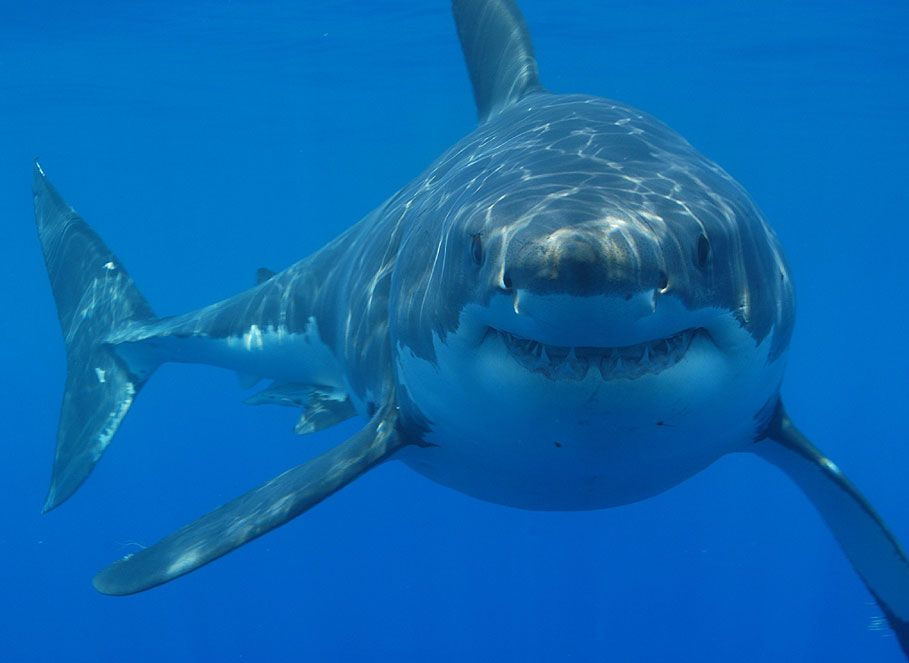
CREATURE-PEDIA
Great White Shark




Did You Know?
Every time a Great white shark loses a tooth, new ones grows behind the ones in front, which means sharks have an endless supply of teeth.
Few animals carry the reputation of the Great white shark, one of the most feared predators on the planet, the Great white is also one of the oldest, scientists believed that sharks evolved over 100 million years ago, the world’s largest predatory fish, the shark is a precision instrument of killing. With a jaw full of razor sharp teeth, this fearsome king of the sea shoots through the ocean like a torpedo, while going after its prey. Adults on average are 13 to 17 feet long and have a mass of 1,500 to 2,430 lb. Male great whites reach maturity at 11.5 to 13.1 ft long and females at 14.8 to 16.4 ft long. Females are generally larger than males. It’s so big that its mouth can reach up to 4 feet wide, enough to swallow a person in one bite, thankfully for us, humans aren’t really on a Great white’s menu, Great white sharks prefer pinnipeds, like seals and sea lions, but they will dine on anything that moves. Since many predators use 1 or 2 senses to track food, Great white sharks uses 4 distinct senses at once to hunt their prey: sight, hearing, smell and electro sense, this makes them extremely efficient and able to locate prey from miles away. At first, a shark might catch the scent of something in the water thanks for the 2 nostrils on the tip of its snout, since sharks use gills to breathe, these nostrils are used only for smell as it follow the scent, special organs called “Ampullae of Lorenzini” locating on the head allow it to scent the electrical fields of creatures moving near by, these organs work like a ship’s radar beacon. Once the shark has pick its target, it slowly approaches utilizing its keen hearing and sight to houn in the unlucky animal, built like a stealth airplane, the great white is able to hunt practically undetected by propelling itself silently through the water using its tail fin. The pectoral fins on the shark’s side balance the hunter the same way as airplane wings, then the shark surprises its victim attacking with rapid precision. Their upper teeth are serrated and sharp as knives, while the lower teeth (although smaller), allow it to hold onto prey as the upper teeth sheer off much flesh as possible, when combined with a shark’s strong jaw, the teeth are able to cut just about anything. As the shark bites its prey, it shakes its head back and forth making the serrated teeth work like tiny saws, if the animal is too large to swallow in one bite, the shark will aim to specific areas to bite and then follow the animal as it bleeds to death. These fast and fearsome hunters are preyed to only one animal, humans, because their numbers has been declined so steadily since the 1970s, that they’re now listed and protected as endangered species. These mighty hunters don’t survive in captivity making conservation efforts even more difficult, so it’s up to humans to preserve the great white shark, one of nature’s most awesome predators.